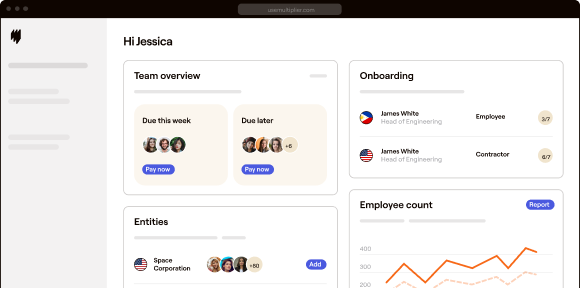CHROs have been striving hard to adapt to the dynamics in recent years—navigating the pandemic, the Great Resignation, economic downturn, political turmoil, and even war. Undoubtedly, CHROs play a significant role in solidifying the future of organizational talent, strategy, as well as business needs. Amid the looming recession, CHROs play an essential role in assuring employees of job security, income, and the strategic direction of the company.
The pandemic significantly impacted every company’s most valuable resource, i.e., its employees. CHROs ended leading a massive, unplanned transformation in the workplace of the future. Efficient organizations use a variety of repositioning techniques to consolidate their strengths and gain a competitive advantage during a recession. However, the fact is that the challenges faced by HR demand a huge commitment to helping gain stability and endure the harsh outcomes of an economic downturn. The CHRO’s involvement in developing the company’s strategy is the answer since the profitability of a business mainly depends on employee productivity since they are the ones directly responsible for working toward achieving the company’s goals.
Failure in a Recession – Definition for CHROs
Harry Truman, the 33rd President and the American Democratic Statesman, once said, “It’s a recession if your neighbor gets laid off; it’s a depression if you get laid off”. While recessions can have varying impacts on different companies, a few challenges are predictable based on the type and size of the business. A small consulting firm may face cash flow issues as clients fail to pay invoices on time, whereas a Fortune 500 corporation may be able to save money by cutting jobs and negotiating better terms with suppliers. Getting an idea of how an economic downturn may affect your business can help you avoid becoming one of the next recession’s casualties.
Let’s look at some of the most common business outcomes a CHRO may define as a failure post-recession.
- You cut costs too far and were not able to keep up with the demand as it returned
- Inflation skyrocketed costs leaving unappealing profit margins
- You were out-innovated by your competitors with technology
- Higher product pricing led to a lost market/market share
- Your competitors secured excellent talent at lesser costs
A Recession-proof Business?
A Harvard Business Review study talks about the last four recessions where almost three-quarters of American public companies with over $50 Million sales experienced declining revenue growth but with increased profitability. This disparity in outcomes can be attributed to the type of product or service they sold as well as how they met customer demands. Furthermore, certain services, such as healthcare, education, and auto repairs, remained in high demand even during a recession.
Now, how can businesses position themselves to ride out the recession? Can CHROs help companies weather a recession or mitigate its effects?
The key internal impediments to a recession-proof business are poor resource utilization, low engagement levels, and skill gaps that L&D does not address promptly. An HR leader can make a significant difference in business success before and during a recession by automating iterative processes, enhancing employee engagement, and fostering a culture of transparency.
Steps CHROs can Take to Navigate the Recession
Create an HR Benchmark Spend
According to Gartner, HR budgets have been reduced to pre-pandemic levels, with over 65% of CHROs expecting a budget increase in 2022. However, in order to meet the current talent demand resulting from the pandemic disruption, HR leaders are now tasked with doing more with the same budget while shaping a work environment that must attract and retain talent in a competitive talent landscape. These challenges highlight the importance of rethinking functional spending and facilitating data-driven conversations to advocate for critical HR investment opportunities in the looming recession.
Therefore, CHROs may create a fundamental benchmark based on HR operating costs by:
- Determining potential HR areas for over or under-investment
- Validating staffing levels by identifying areas of over or under staffing
- Recognizing areas that need reinvestment to help achieve critical business objectives
Review and Improve the HR Functional Maturity
HR leaders may leverage a maturity assessment tool, such as Gartner’s, to assess the existing capabilities and identify priority areas of improvement to help the business move up the maturity curve. This assessment also determines HR’s strengths and weaknesses to influence the overall strategic efforts. Moreover, it helps create a fact-based case to acquire necessary budgets and enable cross-functional planning discussions within the company.
The Gartner HR Score graph compares the benchmarked maturity score to the importance placed on that activity in terms of its criticality to the function of meeting business objectives. Such maturity analysis shows the gaps between the existing and desired states. It enables the HR leaders to plan the alignment of strategy with available resources with respect to the market needs. In particular, it helps with decisive actions that help navigate recession more easily.
Ensure Flexibility and Adopt a Creative Approach to Staffing
CHROs must create a strategy for moving people where they are most needed. They may examine their workforce’s age and other demographics to anticipate future requirements and prepare employees to take on jobs from within the organization when hiring is halted.
Also, since the current recession will make it difficult for HR leaders to balance attracting and retaining talent with limited funds for pay raises or enhanced benefits, it is even more challenging to retain all-star employees when salary increases are not available. Therefore, CHROs must be creative in order to improve the employee value proposition, such as alternative work schedules or 30-hour workweeks.
Demonstrate Gratitude and Empathy
Forbes reports an American Psychological Association (AMA) study, according to which 93% of the employees who feel valued are motivated to perform their best at work. CHROs must note that it is critical to recognize employees who are taking on more responsibilities as others leave. This can take the form of new titles, advancement opportunities, or other forms of recognition. Any expression of gratitude alleviates workers’ fears that they will be the next to go. An Amazon gift card or a pizza lunch demonstrates that the company notices and appreciates their efforts.
Similarly, it is essential to show empathy towards the employees who have been asked to leave the organization due to the economic downturn. The HR leaders must assist managers in training them to appreciate the work of the laid-off employees and inform them that they may always reapply as soon as the hiring resumes.
Leveraging an Employer of Record (EOR)
A recession is a difficult time for businesses that require flexibility, expertise, and speed of action. CHROs may handle such a crisis by leveraging Employer of Record (EOR) services that meet all these three criteria. Due to the resilience and cost efficiency they provide, an EOR solution helps navigate through legal changes for a globally distributed team, takes care of the HR and compliance needs, and enables the recruitment of the best talent that further helps businesses get back on track in times of economic uncertainties. As a result, an HR leader can help the organization stay ahead in the competition and thrive despite the slowdown.
The Way Forward
With uncertainty ruling the roost at the workplace—having a “recession-proof” workplace strategy that accounts for considerations and workforce policies may mitigate the worst of future economic shocks. CHROs and other C-suite leaders must collaborate to create a preventive roadmap as well as a robust contingency plan for a truly recession-proof business. HR leaders play a crucial role in establishing a clear communication pathway, a work environment that fosters collaboration and engagement, and, finally, by utilizing the various technologies and tools available.
Since the “people aspect” is one of the key factors that can make or break a company, CHROs are a valuable crisis-resolution point of contact for the company.







